The site of Khirbat Ibreika, located in southernIsrael a few kilometers from the Eyal Junction, was the focus of major archaeological excavations conducted in 2018 in anticipation of the construction of the Eastern Railway. The excavations uncovered numerous remains dating back to the Roman period, including a funerary complex that provided crucial information about the funerary practices and religious beliefs of the time.
Notable discoveries include a group of cist burials, some of which date back to the first centuries of our era, testifying to a civilization that integrated symbolic and functional aspects into its burial practices. As reported in a recent article in theIsrael Antiquities Authority portal, the research focuses on a collection of four bronze discs, each of which features a meticulously decorated lion’s head in high relief, dating from the period-Roman (1st-2nd century CE). The discs, found inside tomb T6, have aroused considerable curiosity because of their rarity and the possible symbolic implications they might conceal.
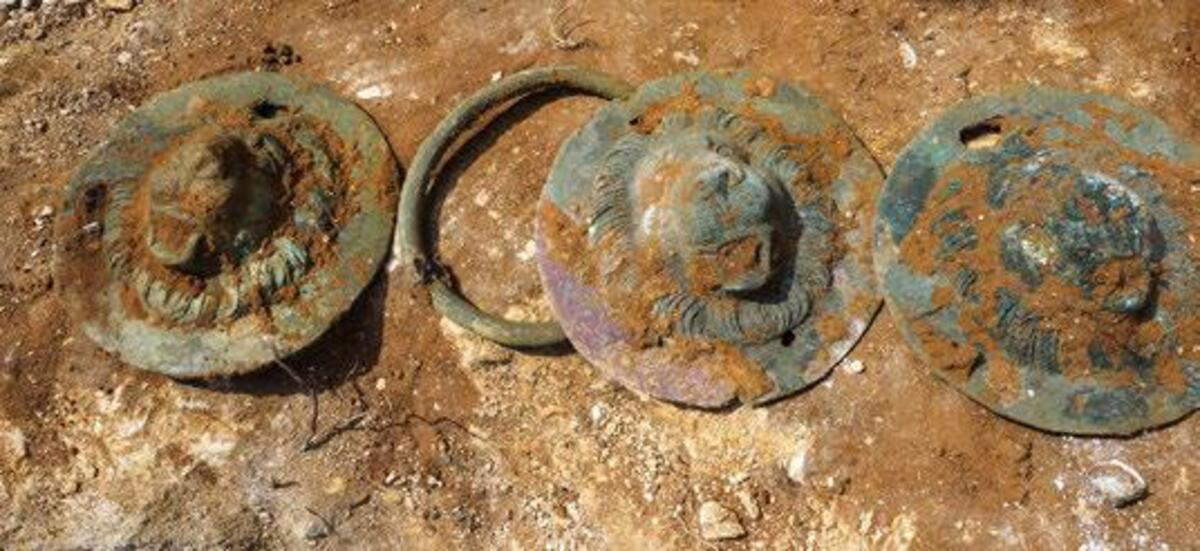
The four bronze discs, decorated with a lion’s head, were found arranged in a stack inside the southern and narrower part of the tomb, along with other funerary artifacts such as glass vessels and an iron nail. Their location, separate from the body of the deceased and out of sight, suggests that these objects did not have a mere ornamental function, but represented key elements of a complex funerary ritual. The decision to place them in a hidden corner of the tomb could reflect the conception of a separation between the body of the deceased and the objects that accompanied his or her passage into the afterlife. Moreover, this arrangement could imply that the objects themselves were considered too sacred or too powerful to be near the body, as if their function was to protect the spirit of the deceased rather than simply to honor him or her. This aspect has been the subject of much speculation by scholars, who suggest that their function may have been one of spiritual protection or divine invocation, rather than aesthetic decoration.
Another interesting detail concerns the particular shape and arrangement of the rings adorning the lion heads. Unlike other examples of similar discs, where the rings pass through the lion’s mouth, the discs found at Khirbat Ibreika have the rings attached at the top of the lion’s head. The particular detail has prompted some scholars to speculate that these objects had not only a decorative function, but also a practical function related to burial, such as serving as handles for the coffin or as supports during transport rituals. The arrangement and functionality of the discs thus suggest that Roman funerary culture was characterized by an integration of symbolic and practical elements, where each object had a well-defined role in the funeral ritual.
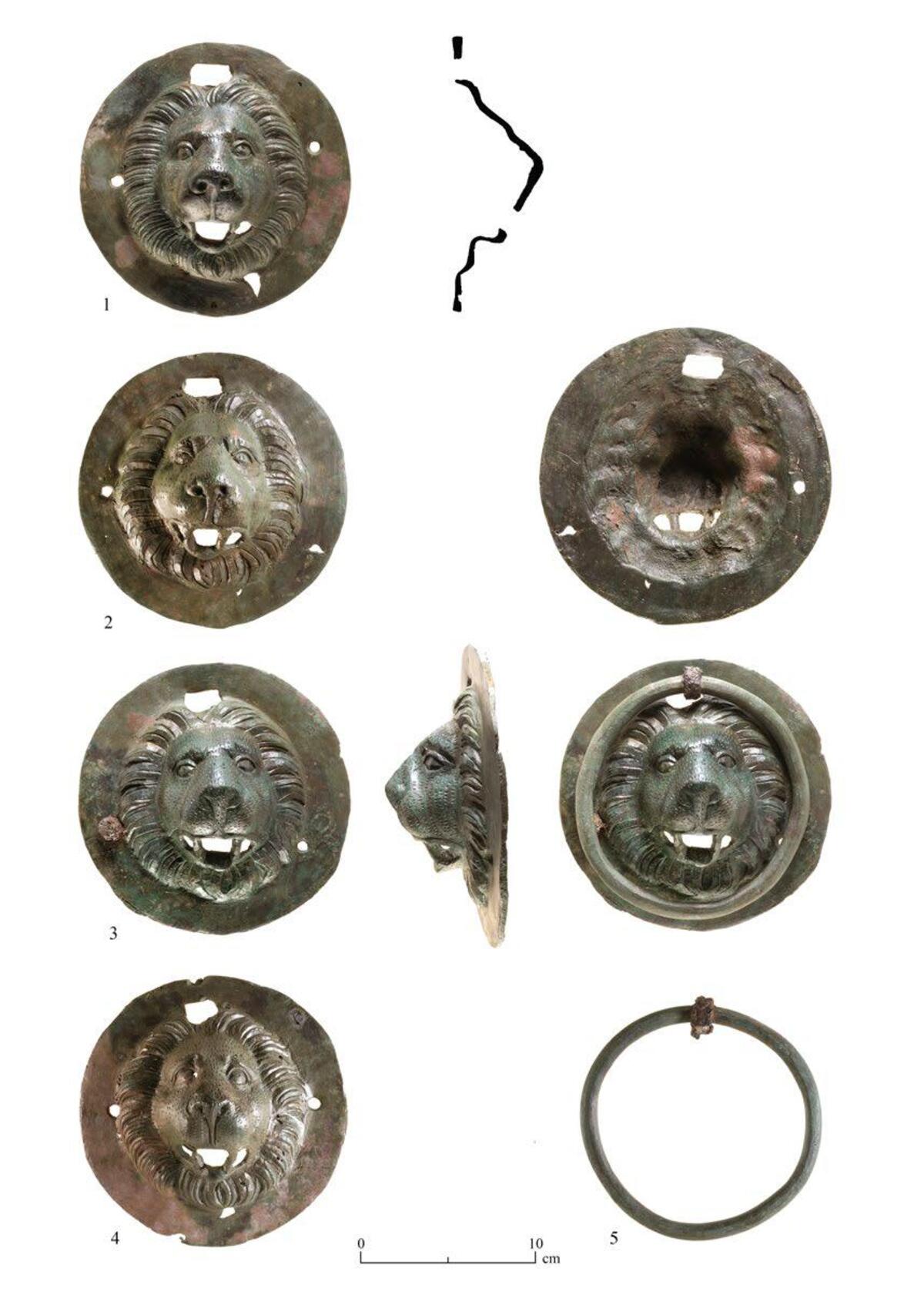
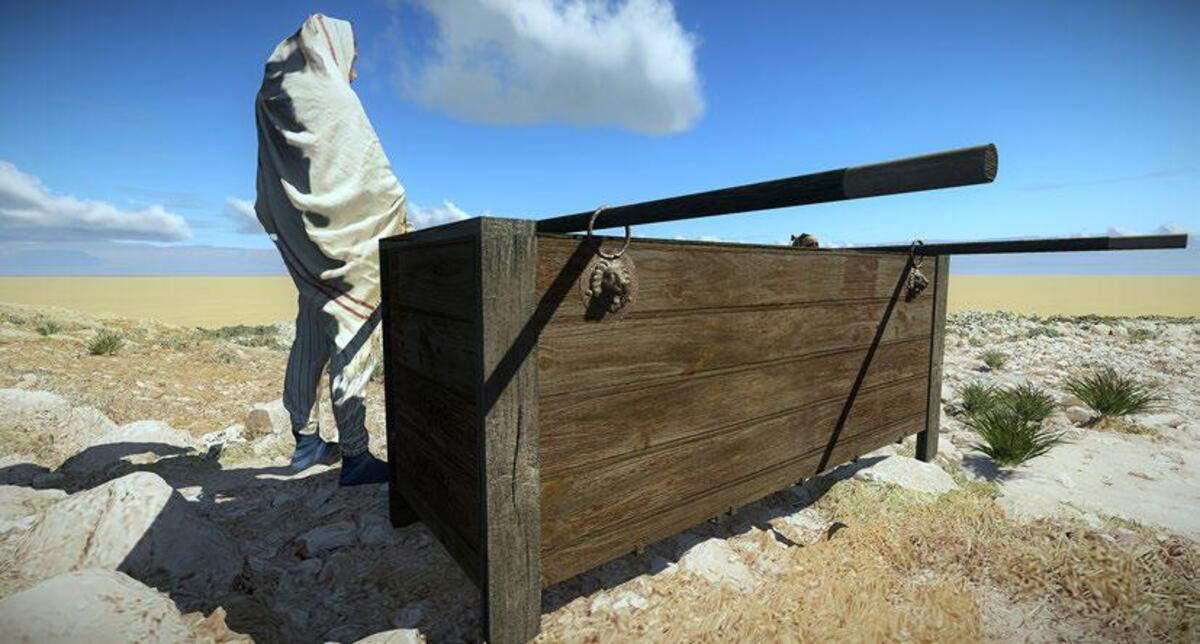
In any case, the discovery of lion-head discs in Khirbat Ibreika is not an isolated case. Similar objects have also been found in other locations in Palestine, Syria and Egypt, where the figure of the lion, a sacred animal and symbol of strength, power and protection, was frequently used in funerary contexts. In many cases, similar discs were used as handles for coffins, serving not only as ornamental elements but also as symbols of protection for the deceased. The lion, in fact, was considered a powerful spiritual guardian, able to protect the soul of the deceased from evil and any kind of danger that might threaten his or her journey to the afterlife. Roman tombs, particularly those of high-ranking people, were often decorated with symbols representing power, prestige and protection. The presence of the lion in these contexts reflected the idea that the deceased, especially those of nobility, needed special protection to traverse the difficulties of the underworld. The presence of symbols in Roman burials thus testifies to the desire to perpetuate the social prestige and power of the deceased beyond death.
In addition to their symbolic significance, the bronze discs found in Tomb T6 may also have had a practical function. Some scholars speculate that these discs were used as coffin handles to facilitate the transportation of the body during burial ceremonies. The use of handles decorated with powerful symbols such as the lion would not only have made the transportation of the deceased easier, but would also have symbolized the protection the deceased received along his or her path in the afterlife. The location of the discs in the southern part of the tomb, separate from the body, could indicate that these objects were reserved exclusively for the spiritual protection of the deceased, rather than for purely practical purposes.
The interpretation suggests that Roman funerary objects, particularly those found in high-ranking tombs, had not only an aesthetic function, but were seen as active tools in the process of the soul’s transition from the world of the living to the world of the dead. Objects such as bronze discs, symbols of power and protection, were thought to watch over the deceased and ensure that his or her passage into the afterlife took place safely. Their symbolic function, which was linked with the practical, highlighted the depth of Roman funerary rites and their connection to the divine and supernatural.
Another important aspect of the discovery concerns the cult of Mithra, a mystery religion of Persian origin that spread throughout the Roman Empire from the 1st to 4th centuries CE. The figure of Mithra, often depicted with a lion’s head or in the company of lions, is a key element in many of its depictions. Mithra, deity of the sun and war, was worshipped mainly by soldiers and the upper classes, and his symbolic figure was very much linked to protection and the concept of salvation of the soul.
The lion, as a sacred symbol associated with Mithra, appears frequently in his temples and in the burials of his followers. The presence of these bronze discs at Khirbat Ibreika might therefore suggest that the cult of Mithra was also practiced in this area of the Roman Empire, indicating that religious beliefs were not limited to the large metropolises but spread to the suburbs as well, as evidenced by the rich tradition of mystery cults that flourished at that time.
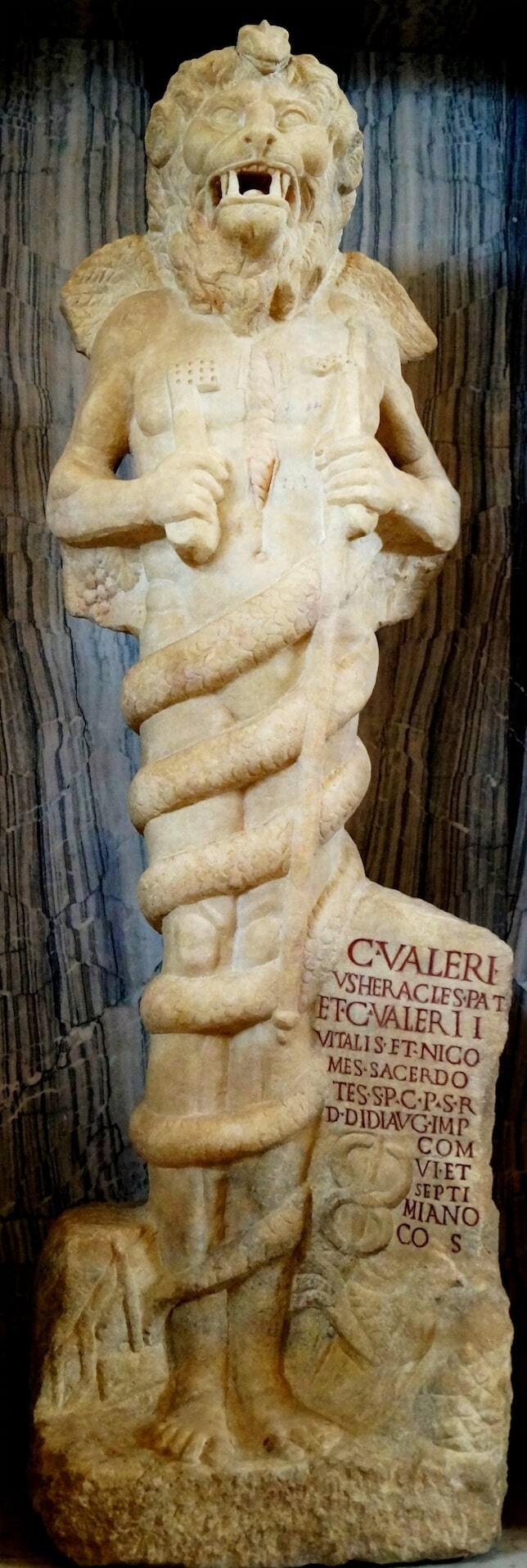
The lion, as a symbol of strength, courage, and protection, was a key figure in Roman funerary rituals. Often associated with protective deities, the lion was seen as the spiritual guardian who protected the soul of the deceased from evil forces and the pitfalls of the underworld. Its presence in tombs was not accidental: the lion represented indomitable strength and royalty, qualities that were invoked to grant the deceased spiritual protection during their journey to the afterlife. The figure of the lion, therefore, was not only a symbol of power, but also an emblem of safety and well-being in the afterlife, accompanying the soul of the deceased to eternal peace.
In the Roman context, the use of symbols such as the lion in the tombs of high-ranking figures also had social and political significance. The inclusion of such symbols reinforced the idea that the deceased had enjoyed special status and was considered protected by divine powers even after death. Such symbols would also have indicated his membership in an elevated social class, destined to be treated with respect and devotion even in the afterlife.
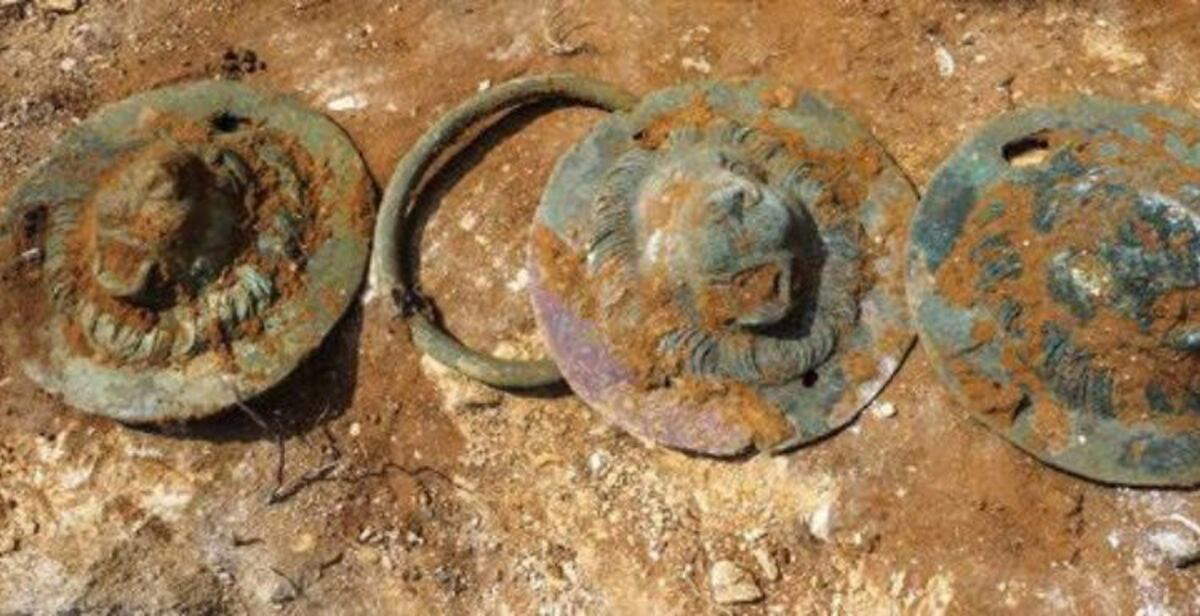 |
| Israel, four bronze lion-headed discs discovered at Khirbat Ibreika site |
Warning: the translation into English of the original Italian article was created using automatic tools. We undertake to review all articles, but we do not guarantee the total absence of inaccuracies in the translation due to the program. You can find the original by clicking on the ITA button. If you find any mistake,please contact us.